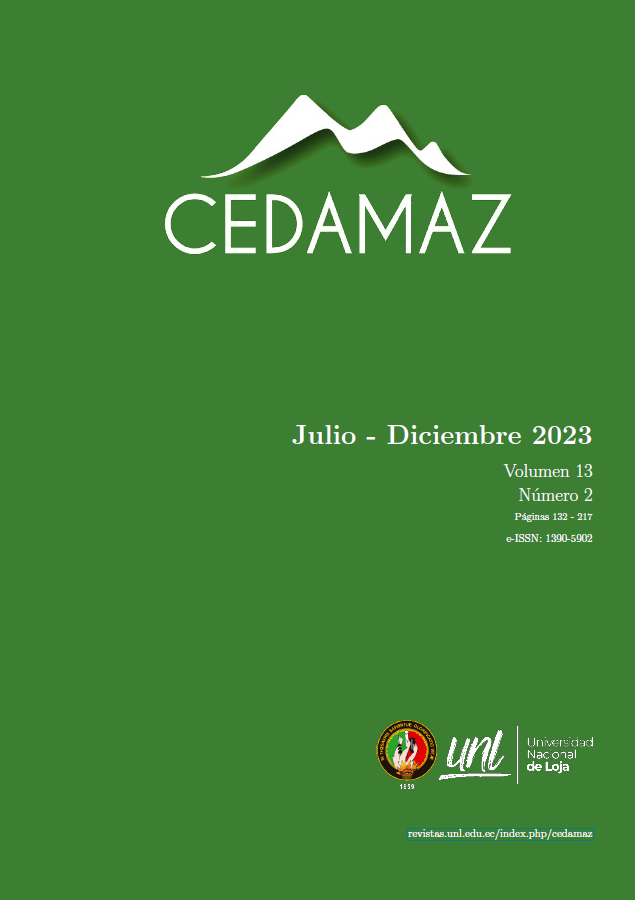Study of reproductive activity in ewes living at the high tropical level in South of Ecuador
DOI:
https://doi.org/10.54753/cedamaz.v13i2.2035Keywords:
Reproductive seasonality, Tropics, SheepAbstract
The highlands of the province of Loja are range between 1,800 and 2,400 meters above sea level and with temperatures that do not exceed 15°C that find small flocks of sheep managed in extensive grazing and roped. Analyze the reproductive activity of sheep under these environmental conditions was the objective of this study. The database was collected through a visit and direct interview with the owners about the reproductive history of each of his animals, 235 adult sheeps from 53 flocks located in 10 highland of the province of Loja participated in study. The results determine that these animals present reproductive seasonality that is associated to the environment conditions of the region, so, sexual receptivity begins in the months of greatest rainfall and lowest light (most availability of food) and births occur in the months with the lowest rainfall and higher temperatures, weaning is carried out at an age of 3.7 months, highlighting the 21% of herds that do not wean their lambs. 43% of this sheep population correspond to Creoles, 34% crossbreed and 23% pure breeds; present a prolificacy of 1.37, enter reproduction at 11.4 months, the flock size in this area is 10 ewes per ram, 30% of flocks show a history of abortions, a management task linked to reproduction is the supply of salt to the animals, where 21% of herds do not do so and in those that do, only 32% administer mineralized salt and 68% supply only salt, the frequency of supply the majority (77.3%) is weekly, 14% daily and 8.7% sporadically. In conclusion the ewes that inhabit the Andes high tropics present a reproductive seasonality that is directly influenced by the availability of food in the months of greatest rainfall and where natural light also influences.Published
How to Cite
Issue
Section
License
Copyright (c) 2024 CEDAMAZ

This work is licensed under a Creative Commons Attribution-NonCommercial-NoDerivatives 4.0 International License.
Those authors who have publications with this journal, accept the following terms:
- After the scientific article is accepted for publication, the author agrees to transfer the rights of the first publication to the CEDAMAZ Journal, but the authors retain the copyright. The total or partial reproduction of the published texts is allowed as long as it is not for profit. When the total or partial reproduction of scientific articles accepted and published in the CEDAMAZ Journal is carried out, the complete source and the electronic address of the publication must be cited.
- Scientific articles accepted and published in the CEDAMAZ journal may be deposited by the authors in their entirety in any repository without commercial purposes.
- Authors should not distribute accepted scientific articles that have not yet been officially published by CEDAMAZ. Failure to comply with this rule will result in the rejection of the scientific article.
- The publication of your work will be simultaneously subject to the Attribution-NonCommercial-NoDerivatives 4.0 International (CC BY-NC-ND 4.0)









